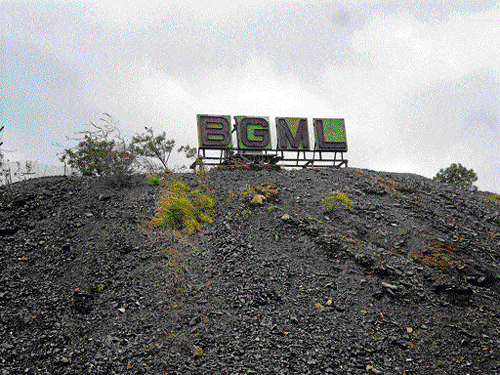
Call them just gold mines–a complex, yet dark world with no room for light or air. Call them the Kolar Gold Fields (KGF) or Bharat Gold Mines Limited (BGML). Or just say “company” like thousands of former miners in the colonies, clinging with tenacious hope even after closure. The“Mini England” of the drought-prone Kolar district is preparing for another turn after 12 years.
Dreams about reviving the “Golden Age”, 12 years after the KGF fell silent on February 28, 2001 and subsequent struggles, are gathering momentum. While the eyes of many mining companies are on the mines now, former miners, labour leaders, people’s representatives and activists stare at an uncertain future.
It was in 1802 that British commander John Warren set up a camp to explore the possibility of mining gold in the area. The explorations gradually gave birth to a city that now surrounds the Fields still believed to contain considerable ore deposits. On one side were the mines and on the other was the hamlet that housed British officers who operated the mines along with workers who migrated from the neighbouring Tamil Nadu and Andhra Pradesh. It is worthwhile to note that mining gold and shaping up a culture that was representative of both the East and the West took place simultaneously here. The Britishers fondly called Kolar Gold Fields “Mini England”. At the beginning, mining was an extremely risky affair. Rocks were blasted under wooden torches in close proximity. As time passed, the situation improved and oil lamps, candles and diesel lamps provided lighting. To speed up gold production in a less hazardous manner, the Kolar Gold Fields were provided with electricity generated at the hydro-electric station, the first one in Asia, at the Shivanasamudra, about 131 kilometres away. After Japan, KGF became the second city to be electrified in Asia. The electric poles and wires laid then are still around, marking time as progress passes them by.
Two hundred years later, it is impossible to imagine Kolar Gold Fields without the mines which gave the city its identity. Today, sadly, the ruins of the mines are just a reminder of a once-rich industrial culture. The mines, which employed more than 34,000 in 1901 had a mere 3,000 on its rolls by 2001– an indication of the drastic decline witnessed by the mining industry as a whole. Several miners have lost their lives to explosions in the shafts, collapse and even to the dreaded silicosis, a disease of the lungs. Thousands others continue to suffer from chronic backache. After Independence, British officials returned home even as the Centre took steps to turn mining into a public enterprise. While among the workers, some went back to their hometowns in Tamil Nadu and others went in search of similar jobs across the country. But most of them, the thousands of descendants of the early migrants who came in search of livelihood here, are living in the colonies belonging to BGML, doing odd jobs. Those who opted for voluntary retirement wait for the elusive gratuity amount while the widows of the killed workers are left to fend for themselves; so are those who retired on meagre pensions. Under these circumstances, the recent Supreme Court order paving way for foreign participation has brought about hopes of the famed mines’ revival. But the road to revival is littered with challenges.
Several mines that are connected to each other from north to south are more than 12,000 feet deep. By the end of 2005, however, water had risen by more than 11,400 feet in these mines.The level will have only risen since then. There was talk of recycling the poisonous water and solve the district’s water problem. People thought that by pumping the water out, the groundwater table would also improve. But in reality, a Central committee formed after mines starting collapsing with alarming frequency found that there was an increasing danger of the shafts collapsing if the water was pumped out, endangering the nearby KGF city as well!
The company which secures the mining rights of Kolar Gold Fields has its task cut out. Future mining involves two main possibilities. Either pump out the water and resume excavating at the same places or take up open mining in the surrounding areas. The biggest obstacle, however, comes from the city itself. Of the 12,109 acres of BGML land, only 2,500 acres have been utilised for mining and for housing colonies. The rest of the area has been taken over by a growing city.
Likewise, all the machinery used in the operations are rusting and rendered useless. Neither is the wood material of any use. As of now, the administrator and his staff’s most important job is to fend off determined thieves out to steal these remnants of a glorious, yet sad chapter in history, to be sold as scrap which is in great demand. Once the revival is underway, a new mining empire with state-of-art facilities may even replace the present-day KGF. How is the question that’s on every stakeholder’s mind right now.
(Translated by B S Srivani)